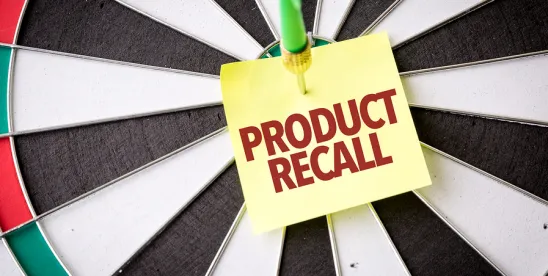On March 1, 2021, the Consumer Product Safety Commission (CPSC) signaled its intent to increase enforcement of its product safety regimen by seeking to more than double its current $135 million budget via a public letter from Robert Adler, acting chairman of the CPSC, to Rosa DeLauro, chairwoman of the United States House of Representatives Committee on Appropriations.1 While the result of this funding request is yet to be determined, a separate $50 million appropriation and an expanded COVID-19-specific consumer product safety agenda are already coming to the CPSC as part of President Biden’s recently enacted American Rescue Plan Act. This new appropriation combined with an increased annual budget would provide additional resources for the CPSC to ramp up its product safety oversight efforts.
Adler’s March 1 letter begins with a two-page introduction that highlights the much larger budgets of other safety regulatory agencies, such as the Food and Drug Administration and the National Highway Traffic Safety Administration. It emphasizes the contrast between the CPSC’s heavy workload and its history of “severe[ ] underfund[ing] since [its] inception almost 50 years ago.” The letter then sets forth a ten-page outline that details a plan to “Reinvent[ ] CPSC.” That reinvention starts with a $370 million budget for 2022, comprised of a $281 million annual budget and a one-year allocation of $89 million (as compared to a budget of approximately $132 million in 2020 and $127 million in 2019).
Overarching themes of this reinvention plan include investment, modernization, restructuring, and expansion. Indeed, Adler’s letter uses some iteration of the term “expand” thirty times. The letter also includes several overarching goals for the agency, including:
-
Committing to vigorous compliance with a Division of E-Commerce Enforcement, expanding defect investigation capabilities through the creation of a Department of Investigations, and increasing civil penalty enforcement;
-
Expanding the hazard identification portfolio by concentrating on chronic hazards, epidemiology, improving/upgrading the National Electronic Injury Surveillance System, investing in artificial intelligence, creating a division for software standards and testing, and developing physical and digital simulated-use assessment capabilities;
-
Emphasizing robust port surveillance through an unfunded congressional mandate in e-commerce, expanded staff at traditional ports, an e-filing program, and a modified and updated risk assessment methodology;
-
Enhancing communications for public affairs, improving the agency’s digital presence, and promoting community engagement;
-
Creating an intergovernmental office to leverage relationships with other agencies at local/state and federal levels;
-
Building diversity and enhancing product safety equity in the CPSC workforce and via increased outreach to vulnerable populations, enhanced data collection, and investments in safety work;
-
Investing in information technology to account for the needs of remote working and modernization;
-
Expanding laboratory capacity and locations to accommodate the evolution of the marketplace and the congressional mandate to increase port surveillance; and
-
Modernizing and restructuring the agency through an official administration department, expanded procurement department, and additional support services.
Adler concludes his letter by acknowledging “that the proposal outlined here is audacious—but it is also necessary” because the “CPSC is a tiny agency with an enormous mission that continues to expand.” Although the CPSC has issued only 50 recalls in 2021,2 Adler’s ambitious budget request signals a potential avalanche of additional recalls should the CPSC get the resources it seeks for 2022.
President Biden’s recently enacted American Rescue Plan Act will give the CPSC an unexpected head start in 2021. Specifically, § 7401 of the Act appropriates $50 million to the CPSC for fiscal year 2021 to:
-
“enhance targeting, surveillance, and screening of consumer products, particularly COVID-19 products, entering the United States at ports of entry, including ports of entry for de minimis shipments”;
-
“enhance monitoring of internet websites for the offering for sale of new and used violative consumer products, particularly COVID-19 products, and coordination with retail and resale websites to improve identification and elimination of listings of such products”;
-
“increase awareness and communication particularly of COVID-19 product related risks and other consumer product safety information”; and
-
“improve the Commission’s data collection and analysis system especially with a focus on consumer product safety risks resulting from the COVID–19 pandemic to socially disadvantaged individuals and other vulnerable populations.”3
These purposes mostly align with Adler’s outline to the Committee on Appropriations, albeit with a COVID-19-specific twist. The question is whether the CPSC will be able to take on any of the items from its 2022 wish list while implementing the objectives of the Act for the remainder of this year. With $50 million and a new COVID-19 consumer product safety agenda in hand, the CPSC seems poised to be even more active in 2021 and going forward.
------------------------------------------------------
1 Letter from Robert Adler, Acting Chairman, Consumer Product Safety Commission, to Rosa DeLauro, Chairwoman, Committee on Appropriations, U.S. House of Representatives (Mar. 1, 2021).
3 American Rescue Plan Act, H.R. 1319, 117th Congress § 7401 (2021).





 />i
/>i

